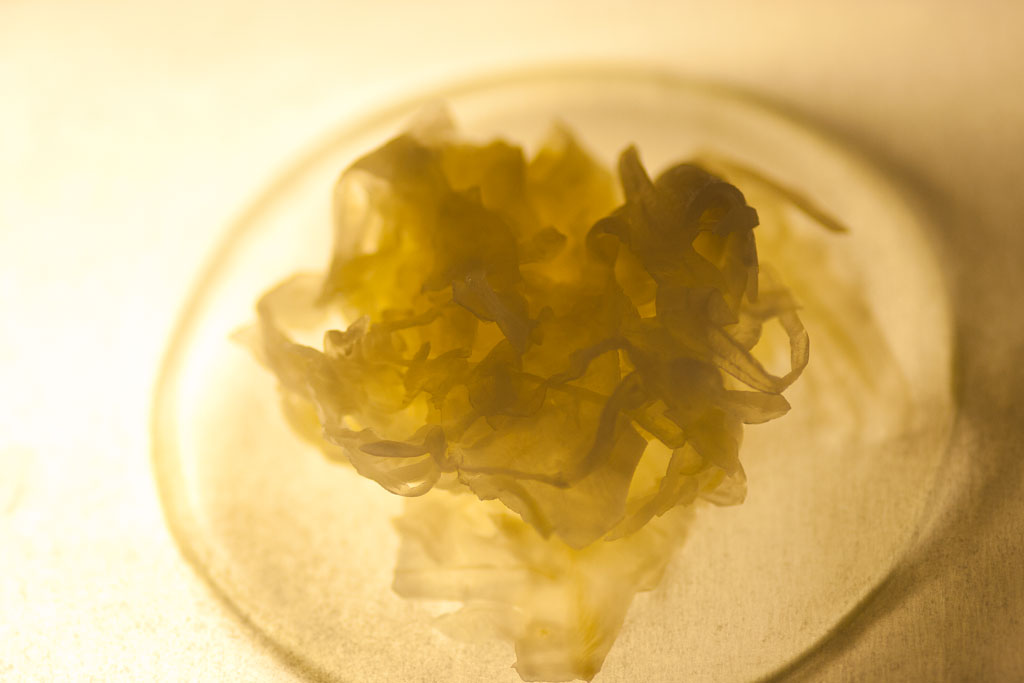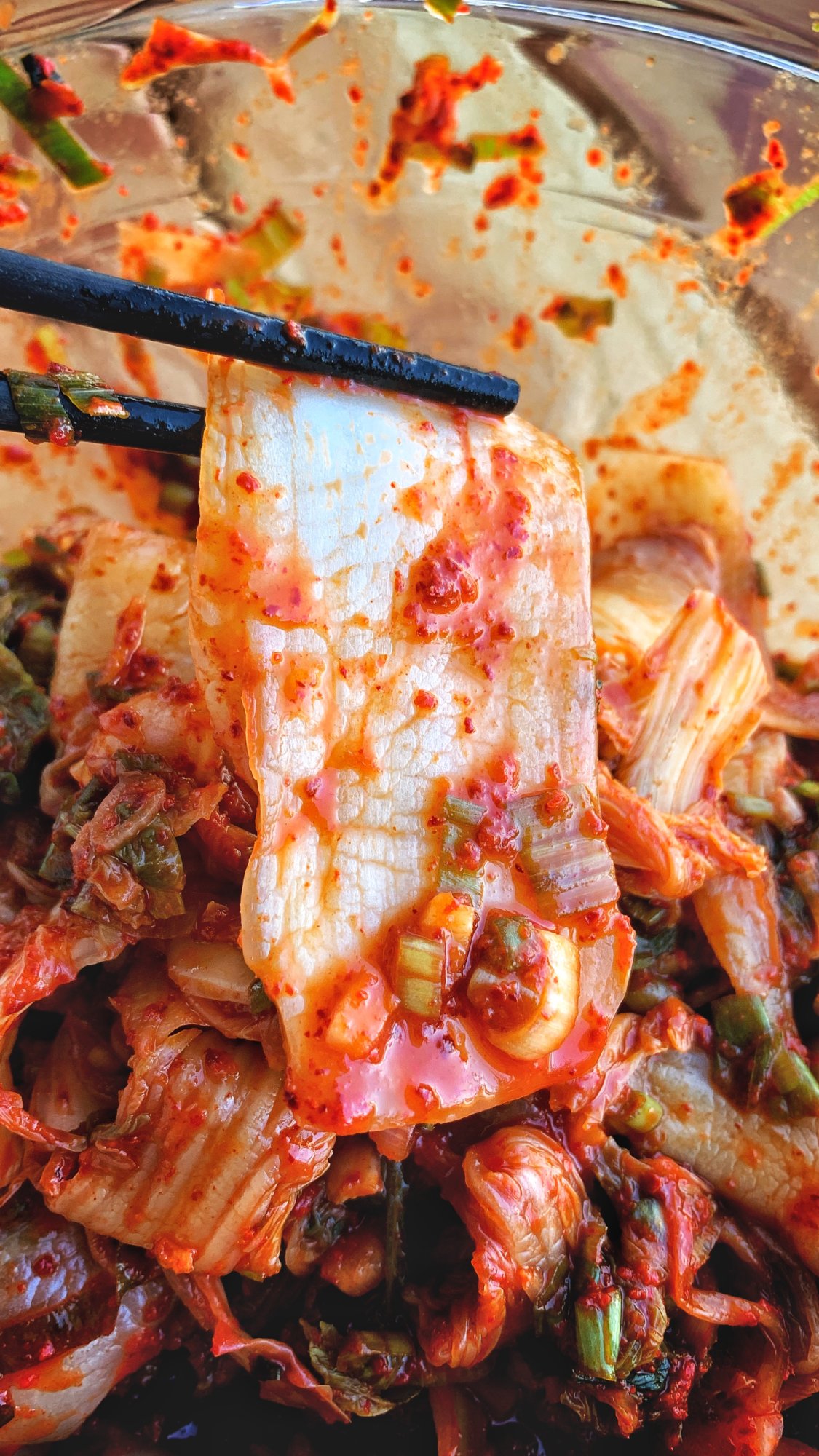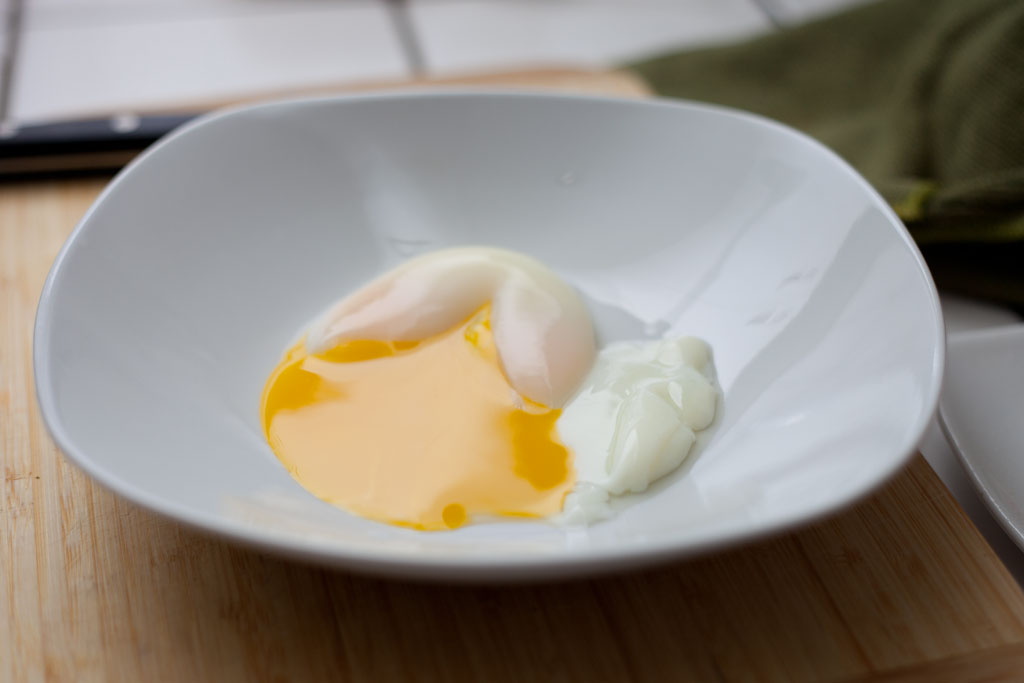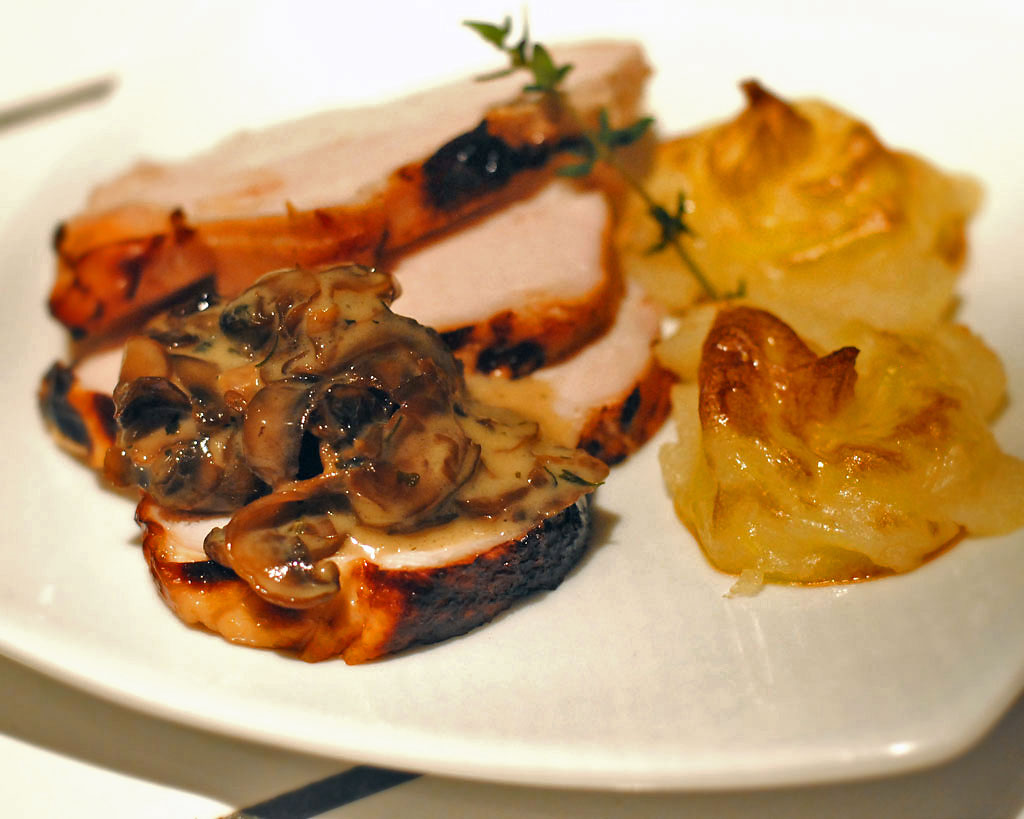The preservation of food via fermentation is probably as old as 3000 BC. Lactic acid bacteria take all the credit in the transformation of simple and quite possibly boring green cabbage into delicious sauerkraut. A staple ingredient in german cuisine, it can be found by different names in many western and eastern european countries as well. Also, the famous Korean kimchee goes through the same process. Here’s how it’s done:
Prep time: 5 minutes.
Total time: 5-10 days or until you determine the fermentation has gone long enough.
Tools:
1 glass jar, nothing metallic and food grade plastic containers only. I used this.
A small dish that fits inside the container to press down on the cabbage.
1 jar filled with water to use as weight to place on top of the dish functioning as press.
Ingredients:
1 whole cabbage, washed and shredded. 2 pounds.
4 tsp kosher salt
Lactic Acid Bateria… they are everywhere.
Method:
Place shredded cabbage in a jar
Place a plate over it, and a weight over the plate, something that can be used to press down on the cabbage.
Keep everything clean, we want to keep fermentation friendly, good bacteria.
The point is to have the cabbage submerged under its own juices.
This will take a couple of days, as the water is drawn out of it by the salt.
Eventually the cabbage will be under its own water, 2 days.
By day 5, you can smell the alcohol byproduct of its fermentation by lactic acid bacteria
The acidity level has risen by now, and it will continue to do so .
A wonderful flavor will continue to develop, the sauerkraut is alive.
Sauerkraut juice can be used to activate a new batch a little quicker.
enjoy.
Wanna get more sous-vide cooking guides and cool cooking how-to’s in your mailbox? You know what needs to be done!
We never spam. You should only be getting updates when new content is posted on the site. We also respect your privacy. We don’t share your email address with anyone and you can unsubscribe anytime!





3 comments
Thanks for following my blog. I like yours!
Making my own sauerkraut is something I’ve yet to try. You make it sound very easy!
Thanks Stefan! and yes, it is pretty easy and super good. I’m fermenting cucumbers now, same methodology, the pickles are awesome. I want to add another post on making cheeses at home. Fermentation is a lot of fun 🙂